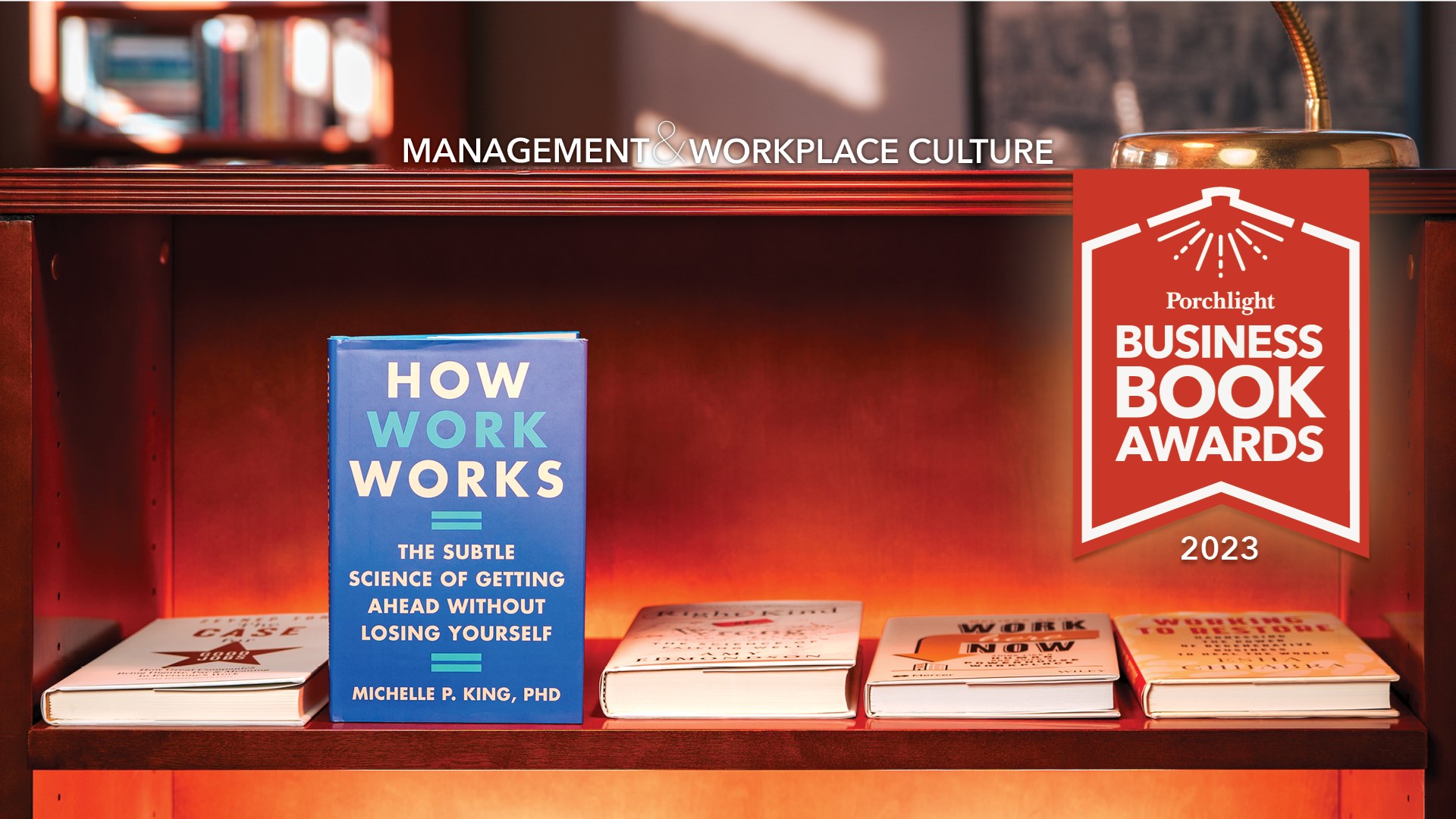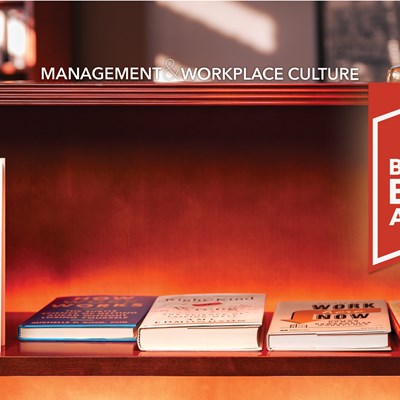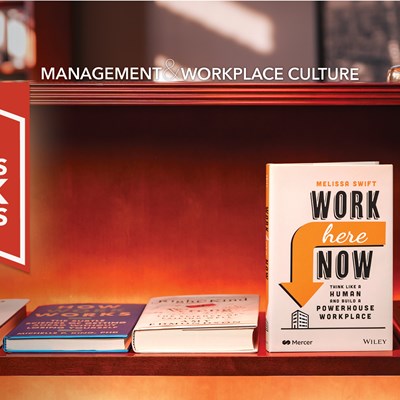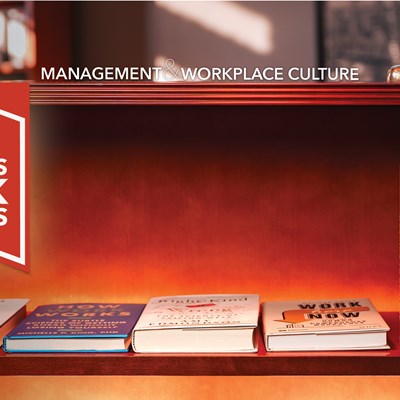How Work Works | An Excerpt from the Management & Workplace Culture Category
December 14, 2023
A unique and revelatory guide to understanding and navigating the unwritten rules of the workplace—the key to achieving success, finding meaning, and staying true to your authentic self in today’s business world.
Michelle P. King’s book would be beneficial in any era, and it is especially important in our own. As remote and hybrid work become more prevalent, and organizations move to flatten hierarchy to “ensure faster decision-making and enable on-the-job learning and collaborative problem-solving,” we all need to be able to manage the greater ambiguity, new ways of working, and the informal side of work. How Work Works helps us do that. The following excerpt is how King begins the book.

Tree canopies block the sunlight. In the Fishlake National Forest in Utah, forty-eight thousand towering quaking aspen trees—known for their bright yellow color in the fall and the quaking sound as the wind passes through their leaves—stand together as they have done for centuries upon centuries. The oldest quaking aspen is fourteen thousand years old. How do trees like these aspens survive cold winters, long summers, drought, and insect attacks for so many years?
Researchers initially believed such trees survived for so long because they could outcompete other trees for sunlight, water, and nutrients. But this isn’t true. New research has found that trees have learned how to cooperate and depend on one another for survival. Trees communicate through an underground fungal network by sending chemical, hormonal, and slow-pulsing electrical signals to let other trees know if they need water, are in distress, or are under attack by a colony of ants. Other trees then alter their behavior by doing things like pumping sugar into the network to support a tree in distress. A forest isn’t simply a collection of trees—it’s a community. Every tree belongs to the community by having a place to stand within it.
Trees also communicate through the air. They use pheromones or other scent signals to connect, ask for help, and share what they need because this is how they survive—together. Trees stay alive because they recognize that they belong to one another. Trees harness the power of the collective to ensure their survival by literally reading the air.
An ecosystem of trees is very much like a workplace. For the past twenty years, I have studied how workplaces work, which is something I believe we should all care deeply about. Over an average lifetime, a person will spend around ninety thousand hours at work, which equates to thirteen years. To put this in perspective, humans spend just over one year socializing over the average lifetime. Therefore, where and how we work has a huge role to play in our happiness and overall life satisfaction.
For this reason, I have dedicated my career to studying organizational culture and working with leaders to make workplaces work better for everyone. I have worked with startups, medium-sized corporations, nonprofits, international organizations, and large multinational companies worldwide. I have worked for organizations where I was proud to be a part of the company culture. And I have also worked at companies whose cultures were so toxic that many departments were wiped out due to some catastrophic combination of terminations and resignations.
I am an expert on workplace cultures. I have spent nearly the same amount of time in workplaces as I have in academia. I earned two undergraduate degrees, a master’s in organizational psychology, an MBA, and a PhD in management and organizational development. Based on my work, I know for sure that at one time or another, most of us have lost our belief in work. We have felt the pain of being excluded from informal networks, the stress of trying to keep up with the pace of change, or burnout after putting in countless hours to get the next promotion, only to be overlooked or disillusioned with cutthroat corporate cultures. We are tired of accepting the myth that individual advancement must come at a cost to ourselves and the people we work with.
“I want my workplace to change, but there isn’t anything I can do to change it,” a manager once said to me with complete sincerity. But we are our workplaces. Saying there is nothing we can or should do to change is like assuming aspens have stayed alive for so long by outcompeting one another. Just like a tree is part of a forest, our workplaces are communities—an intricate network of people who rely on one another to survive and flourish. So understanding how to make your workplace work for you starts with understanding your place within it. This book details what it takes to advance at work but, more important, how we derive fulfillment from what we do and contribute beyond a job description. I hope that every reader will understand why our collective survival—much like a tree depends on its forest—is determined by our ability to read the air.
A businessman in Kyoto was in a lunch meeting with his new client. After cordial exchanges, they got down to business. After a while, the client complimented the businessman’s watch. Proud and pleased, the man looked at his watch, smiling, marveling at the features of the fancy piece while retelling the story of buying it. The client’s face fell, unimpressed by the tale, and he became disengaged in further business discussion. Wondering what he had said wrong, the man studied his watch again, and he noted the time and realized their meeting had gone over the scheduled hour. He had missed the client’s subtle cue to wrap up the conversation.
The businessman shared his experience on Twitter, and the tweet went viral because his experience is something we can all relate to. So many of us struggle to know how to manage the informal interactions and experiences of work. For example, do you know (without looking at your watch) when a meeting is nearly over? Do you know when it is the right time to ask for a raise? Do you understand the subtext of what is being said or not said? Can you read the subtle meaning behind someone looking at their watch? The informal side of working life is challenging to manage because it is invisible.
Think about the first job you ever had. How did you learn to do your job? All the official work rules—like the hours you need to worka nd most of the tasks you need to complete—are explicitly clear because they are written down or communicated in a policy, employee handbook, or job description. But there is another side to working life that doesn’t get communicated—the informal rules, which include the norms, expectations, and behaviors that govern how things get done. For example, when you start out in your workplace, you might observe how people interact and what behavior gets rewarded. Your coworkers might welcome you over Zoom, take you out for coffee, or schedule a virtual lunch to get to know you. Each of these observations and interactions helps you piece together how your workplace works.
The Japanese have a term for understanding the how of work or reading the shared norms of social situations, “Kuuki wo yomu,” which translates to “read the air.” The Japanese businessman failed to read the air and wrap up the meeting, which is so unusual in Japan that he felt the need to tweet about his mistake. In Japanese culture, learning to read the air is about grasping the subtext of what is being communicated beyond words, interpreting nonverbal cues, and being mindful of the broader context.
But reading the air is something a lot of cultures are familiar with. I have lived in numerous countries and heard various phrases to describe the ability to understand the informal side of working life. For example, in America, I would listen to my colleagues talk about the need to “read the room,” whereas in England, my coworkers refer to “taking the room’s temperature.” Other standard references include “read between the lines” and learning the “unwritten rules” of working life. These phrases may be used differently in different contexts, but ultimately, they refer to the same thing: your ability to understand and interpret other people’s feelings, needs, and intentions so that you can manage your informal interactions with them.
Reading the air is not just about knowing the shared norms that govern our everyday interactions. It also includes a deep understanding of your work environment regardless of the setting. Many business leaders I have worked with refer to reading the air as judgment, organizational awareness, or political skill. They argue this ability is the secret sauce to career advancement and success—from the ability to work with anyone to understanding the inner workings of an organization’s culture to getting paid what you are worth—if you know how to read the air, you know how to get the job done.
Being able to read the air is about understanding the how of work.
Throughout this book, you will venture on a journey of self-discovery as you find out how to read the air and connect with your workplace, your colleagues, and even yourself. This book will demystify “the air” and reveal the unwritten rules for managing the how of work. In discovering how to manage the informal side of working life, you will gain the ability to work anywhere because you’ll know how most workplaces work.
Adapted from How Work Works: The Subtle Science of Getting Ahead Without Losing Yourself.
Reprinted by permission of Harper Business.
Copyright © 2023 by Michelle P. King.
All rights reserved.







